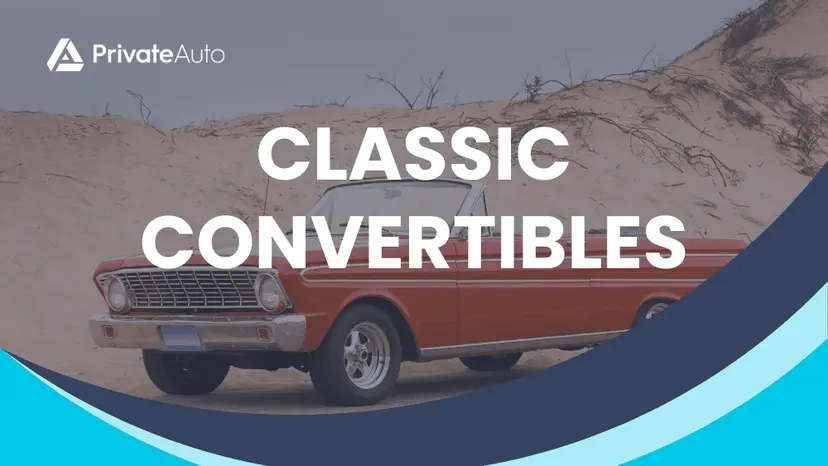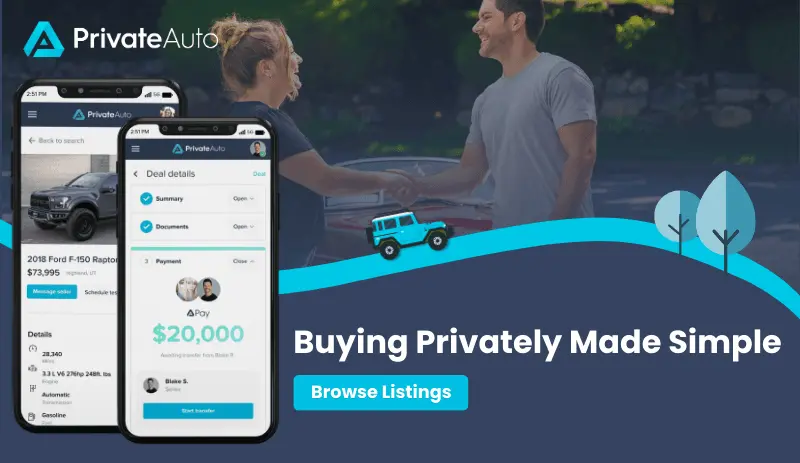
Types of Old-School Classic Convertibles
Here are the main subcategories of classic convertibles:
1. Antique convertibles: these predate the 1920s and were pioneering automobiles showcasing advanced engineering for their time. Prime examples include the 1904 Wilson Convertible Runabout, 1913 Peugeot Bébé, and 1915 Scripps-Booth Bi-Autogo.
2. Vintage convertibles: built between 1919 and 1930, these vehicles ushered in more refined features and elegant design language. Notable convertible classic car models are the 1925 Rolls-Royce Phantom I or sporty roadsters like the 1929 Ford Model A.
3. Classic convertibles: spanning the 1930s to 25 years old, this category contains many of the world’s most iconic, prestigious marques at their peak. This includes the 1970 Alfa Romeo Spider, 1976 Cadillac Eldorado, and 1988 BMW 3 Series Convertible.
4. Modern classic convertibles: more recent high-end models that have achieved classical status due to their advanced technology, lavish amenities, and historically significant designs. Examples include the Ferrari 355 Spider, the 1999 BMW Z8 Roadster, the 1998 Mazda Miata, and the Jaguar E-Type convertible.
While there is some overlap or disagreement about the above categories, they generally hold for most classic car enthusiasts.
Advantages of Owning a Classic Convertible
1. Value
2. Nostalgia
3. Uniqueness
4. Simpler mechanics
5. Low insurance costs

Appreciation in Value
Nostalgia
Uniqueness
Simpler Mechanics
Lower Insurance Costs
There are a few key reasons for this:
- Classics are typically not used for daily commutes, so fewer miles driven annually lowers risk. This is why most insurance companies offer discounted ” pleasure use” plans.
- Owners tend to be older and more experienced drivers with good records, representing lower risk. Safe storage also reduces theft and damage risk.
- Limited usage means lower premiums for collision and comprehensive. Most owners select just liability coverage.
- No need for expensive collision avoidance tech and replacement parts coverage.
- Disadvantages of Classic Convertible Cars
1. Fuel efficiency: classic cars tend to be gas guzzlers.
2. Unreliability: classic cars can be less reliable than modern vehicles due to their age and older technology. Regular maintenance and tune-ups are essential to keep them running well.
3. Expensive parts: parts for classic cars—especially for convertibles—are expensive, as they need to be custom-fabricated or imported from other countries.
4. Rust and corrosion: classic cars, especially those made before the 1980s, are more prone to rust and corrosion.
5. Comfort and convenience: classic cars lack modern comforts and conveniences, such as air conditioning, power windows, and infotainment systems.
6. Insurance limitations: some insurance policies for classic cars may not cover the car’s actual value or allow daily driving.
7. Limited cargo and passenger space: cars were designed with performance over utility, so cargo capacity and rear passenger room are often limited compared to modern family vehicles.
8. Antiquated safety systems: no airbags, anti-lock brakes, crumple zones, or electronic stability controls.
Despite these disadvantages, enthusiasts go for classic convertibles because they love them. And we don’t blame them.
How to Research Classic Convertibles Pricing?
Classic convertibles are worth whatever the market is willing to pay. That’s why most of them are sold via auction.
If you’re a potential buyer, go on auction websites to see what buyers are bidding. You can also talk to dealers who specialize in classic convertibles to see what they are listing their vehicles for. This research may give you a price range of what your target vehicle might sell for.
If you’re the seller of a classic convertible, auction your car yourself with our easy self-serve auction feature and see what buyers are willing to pay. You can set a minimum reserve to protect yourself.
Where is the Best Place to Buy a Classic Car?
1. Buy from a classic car dealer.
2. Buy from an auction website such as Cars and Bids or Hemmings.
3. Buy from a private seller.
We’re big fans of buying from a private party. Historically, doing so has been more of a hassle, but we’ve changed the game. Buy on PrivateAuto with our easy self-serve technology, skip the dealer fees, and get more bang for your buck.
From instant payments to secure communications, we give you the power to drive the deal on your terms. That’s why we’re the best place to buy a used classic car online. We have a wide selection of non-classic perfect cars for sale as well.
Browse our full selection of vehicles for sale by owner.

Where is the Best Place to Sell My Classic Car?
Classic car dealers have to buy low so they can mark your car up and make a profit. You capture that extra profit when you sell directly to the end user.
We give you dealer-like convenience in the palm of your hand so that you can sell your classic on your terms.
- Auction your classic car yourself and see what the market is willing to pay.
- Skip expensive and inconvenient escrow services with our escrow-like safeguards.
- Get paid instantly with no transfer fees.
- Steer clear of car scams with identity verification.
- Keep your personal information safe with our secure platform.
Even better, you can list your car on other marketplaces. If you find a buyer, you can use our DealNow feature to invite the buyer to a fast-track dealflow that gives you all the advantages of our transactional infrastructure.
Create your listing on PrivateAuto now and see how easy selling your classic can be.
Classic cars FAQ
What is the best classic convertible to buy?
The Toyota Hilux pickup from the 1980s and early 1990s has proven to be the most reliable classic truck.
The Hilux demonstrated an impressive build quality and longevity that competitors couldn’t match. Owners reported driving their Hilux for decades with few issues.
Which is the most reliable convertible car?
Classic trucks that have seen a significant increase in popularity:
1. Chevrolet C10 Cheyenne Pickup
2. Ford F-150
3. Dodge Power Wagon
4. GMC Syclone
5. Dodge Li’l Red Express
Do they still make convertibles?
Keep the following in mind to make a well-informed purchase:
1. Determine your budget before starting your search to avoid overspending or missing out on a good deal.
2. Research the specific model and year of the classic truck you want to understand its history, specifications, and common issues.
3. Thoroughly inspect the truck for signs of rust, damage, engine and transmission health, as well as interior and exterior condition. If you want to be really thorough, .
4. Inquire about the truck’s maintenance history, repairs, and modifications made by the seller to understand how well the vehicle has been cared for.
5. Consider the originality of the truck, if authenticity is important to you. Look for trucks with original parts, paint, and interior to maintain value and authenticity.
6. The rarity and collectibility of a classic truck can significantly impact its value. Look for limited-edition models, unique features, or trucks produced in limited quantities for potential investment value.
7. Ensure that the truck comes with all necessary legal documentation such as a clear title and registration to avoid any legal issues and understand the vehicle’s history.
What's the most popular classic convertible?
A 20-year-old truck is not considered vintage. It belongs in the modern classic car subcategory.
What's the most desirable classic car?
The lifespan of a truck depends on the type of truck, its usage, maintenance, and driving conditions.
1. Light-duty trucks: average lifespan of 200,000 to 300,000 miles or 10 to 15 years.
2. Medium-duty trucks: average lifespan of 300,000 to 500,000 miles or 12 to 20 years.
3. Heavy-duty trucks: average lifespan of 750,000 to 1,000,000 miles or 15 to 20 years.
Are classic cars good for daily driving?
The vehicle generally needs to be at least 25 years old to be classified as classic, though many enthusiasts argue it should be older. The exact age criteria can vary among different clubs, jurisdictions, and insurance policies, but most agree that calling something a “classic” before it has reached that 25-year milestone is premature.
What is the best classic car to invest in?
Classic trucks daily driving, but it depends on the specific truck and its condition. Some classic trucks, such as the Ford F-150, are known for their durability and can be driven daily with proper care.
What is the rarest classic car?
Classic trucks daily driving, but it depends on the specific truck and its condition. Some classic trucks, such as the Ford F-150, are known for their durability and can be driven daily with proper care.